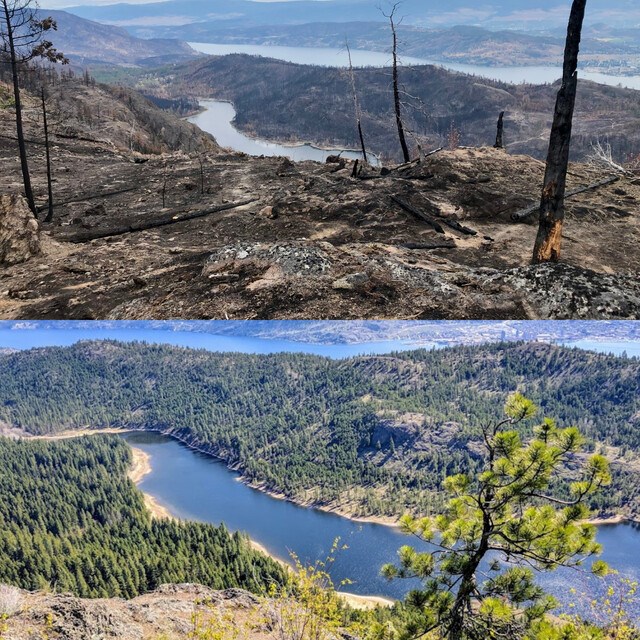The view from the McDougall Rim trail above West Kelowna's Rose Valley looks very different post-wildfire.
Aside from the visual shock left by looking at the charred landscape, there are also concerns about what the impact on drinking water could be after heavy rain or next spring's snow melt.
UBC Okanagan assistant professor of Earth, Environmental and Geographic Sciences says the impacts could be significant.
"The image shows a lot of high severity fire in those areas. If we're talking about hydrology, and we're talking about the Rose Valley watershed, some of those are going to be hydrological impacts," Bourbonnais said in an interview with Castanet.
Hydrology is the study of the distribution and movement of water, on and below the Earth's surface, as well as the impact of human activity on water availability. Bourbonnais believes there will be both long-term and short-term impacts because of the wildfire.
In the short-term, West Kelowna could see more sediment in the reservoir's water.
"In high severity fire areas, especially in steep terrain, oftentimes, it'll actually burn through the organic matter on the forest floor."
Bourbonnais says that will mean the soil won't retain water and will run off, "so future storms, for example, can result in a lot of runoff, and landslides or increased sedimentation into the reservoir."
The City of West Kelowna is working to complete the new Rose Valley water treatment plant by the end of the year. As it stands now, drinking water coming from the reservoir is not treated beyond chlorination, meaning residents are already very familiar with water advisories.
The city said last week it is just starting to study the impact the fire had on the watershed.
Bourbonnais says a "really important question" remains what kind of demand the new landscape will put on the new treatment plant.
"So if we get big sedimentation loads into the reservoir that could be an issue. Also, those forests do a really good job of cooling the water that comes down into the reservoirs."
"Those soils and that vegetation that would generally capture some of that water are gone. So rather than that water being stored up in organic matter in the watershed, it's all going to come down, so you can get way more water than you would expect. Which is a challenge, because water treatment plants generally are set up to handle a certain amount of water."
Bourbonnais says more water means more sediment.
The lack of trees and soil could also lead to more landslides, "any areas where we've lost a lot of the vegetation, there's still a fair amount of organics up there or soils, those are going to be probably at a higher risk of sliding, I'd say in the spring."
Looking longer term, Bourbonnais said it is not clear forests will regrow in the watershed due to the high severity of the burn and climate change.
If there is a bright spot, Bourbonnais says the wildfire will also help regenerate growth of grasslands that serve as protection against major wildfires.
Bourbonnais believes we have more trees in the Okanagan Valley bottom than we would have had historically.
"In the future, when we talk about what's going to come back, it might not be the same forest, it might be more grasslands, and woody savannas with shrubs, pine or some other sort of species tree species that come back, but it might be far more open."
If that happens Bourbonnais believes the frequency and intensity of future fires could decrease.



